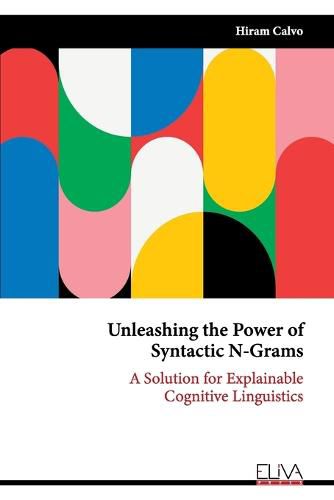Readings Newsletter
Become a Readings Member to make your shopping experience even easier.
Sign in or sign up for free!
You’re not far away from qualifying for FREE standard shipping within Australia
You’ve qualified for FREE standard shipping within Australia
The cart is loading…






Recently Natural Language Processing has seen the rise of computationally expensive (although effective) technologies to deal with the nuances of language. While traditional approaches seem to be less popular nowadays, there are several advantages that these may provide. In particular, n-gram-based models foster the explainability of Artificial Intelligence-based algorithms. This is why this book was conceived. Recent studies applied to related areas (Sidorov, 2013) show that syntactic n-grams can help to improve several tasks, since they consider not only the expressions’ words, but also their part of speech and the long distance connections that they can capture. A disadvantage of syntactic n-grams might be the need of a parser, which can be slow and may not be available for all languages, so that the benefits of using this additional resource should be clear. In this work we present an in-depth research in order to present the strengths and weaknesses of using syntactic n-grams in a variety of applications. Some of them have been benefited from this approach, while others have just been scantly explored. Among others, we present several techniques for textual entailment, error correction, and fake news detection. Different kinds of syntactic n-grams (sn-grams) are evaluated: dependency-based sn-grams, and constituent-based sn-grams. We also evaluate these variants along with continuous and non-continuous sn-grams. We expect that this book helps our readers to appreciate the benefits of using n-grams and syntactic n-grams in a number of applications; those detailed in this book, and many others to be found in the vast field of Computational Linguistics.
$9.00 standard shipping within Australia
FREE standard shipping within Australia for orders over $100.00
Express & International shipping calculated at checkout
Recently Natural Language Processing has seen the rise of computationally expensive (although effective) technologies to deal with the nuances of language. While traditional approaches seem to be less popular nowadays, there are several advantages that these may provide. In particular, n-gram-based models foster the explainability of Artificial Intelligence-based algorithms. This is why this book was conceived. Recent studies applied to related areas (Sidorov, 2013) show that syntactic n-grams can help to improve several tasks, since they consider not only the expressions’ words, but also their part of speech and the long distance connections that they can capture. A disadvantage of syntactic n-grams might be the need of a parser, which can be slow and may not be available for all languages, so that the benefits of using this additional resource should be clear. In this work we present an in-depth research in order to present the strengths and weaknesses of using syntactic n-grams in a variety of applications. Some of them have been benefited from this approach, while others have just been scantly explored. Among others, we present several techniques for textual entailment, error correction, and fake news detection. Different kinds of syntactic n-grams (sn-grams) are evaluated: dependency-based sn-grams, and constituent-based sn-grams. We also evaluate these variants along with continuous and non-continuous sn-grams. We expect that this book helps our readers to appreciate the benefits of using n-grams and syntactic n-grams in a number of applications; those detailed in this book, and many others to be found in the vast field of Computational Linguistics.